How to Identify an American Redstart
Updated: Apr. 10, 2024
The American redstart is a black and orange warbler. See what the males and females look like, learn what they eat, and hear their song.
On This Page
What Does an American Redstart Look Like?
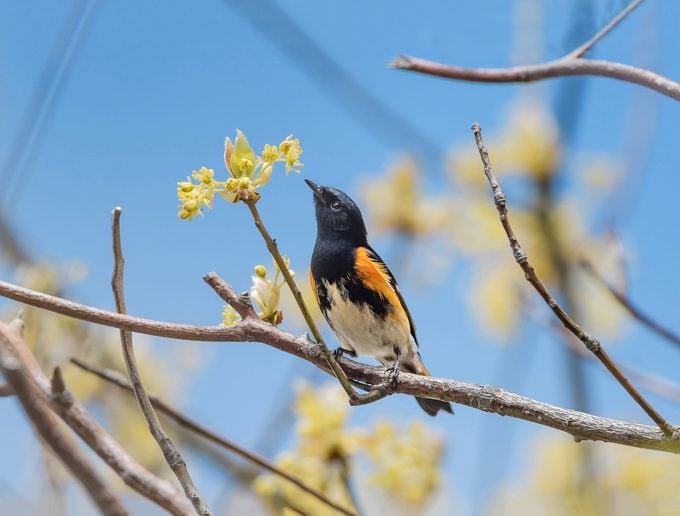
Bright yellow plumage is common among warblers, but the vibrant American redstart is distinctive. Males are mostly black, but bright orange patches on their sides, wings and tails help them stand out from leafy foliage.
“A lot of warblers can be tricky because they resemble other warblers, but there’s nothing like redstarts,” says Bill Rowe, president of St. Louis Audubon Society. “They’re immediately recognizable. The adult males, especially, but the females, too.”
Females have a more muted color scheme—their gray heads and dark wings are less eye-catching than the colors of their mate. Females have a patch of yellow on their sides, and a muddy yellow coloring extends to their tail and wings.
American Redstart Behavior
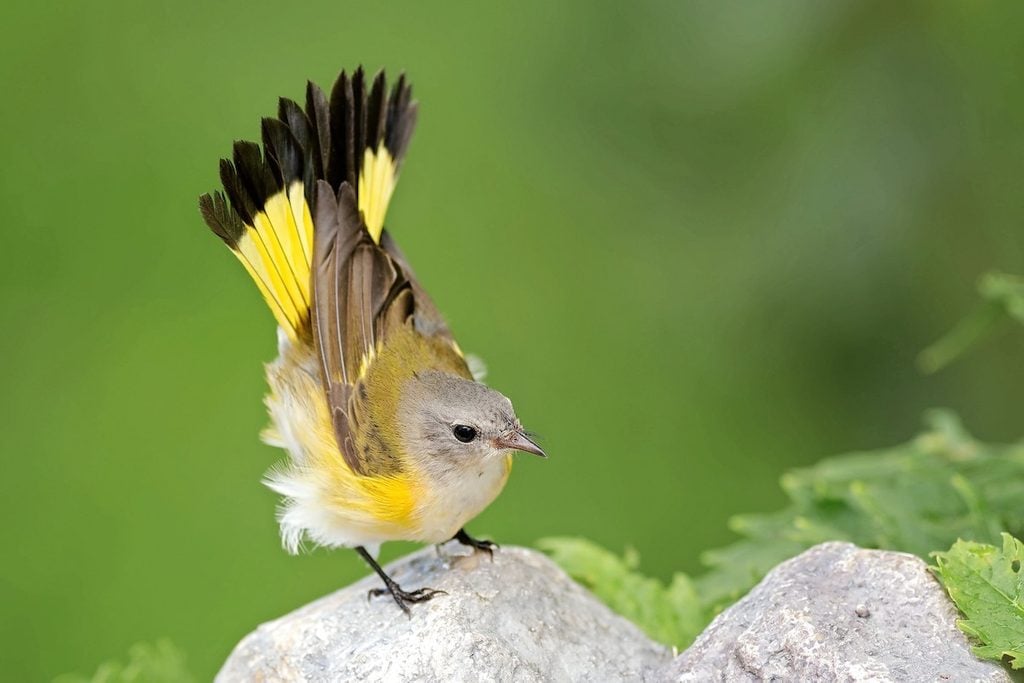
Redstarts are among the most active warblers. As a notable behavioral quirk, they tend to fan out their tails as they move, which makes them easy to identify.
“Theoretically, they do that to flush insects out so they can catch them in flight,” explains Dr. Kevin McGowan, senior course developer for the Cornell Lab of Ornithology’s Bird Academy. “They do a lot of fly-catching, so they’re trying to frighten the insects that are hiding into revealing themselves by flying away.”
Discover more fascinating facts about warblers.
American Redstart Habitat and Range
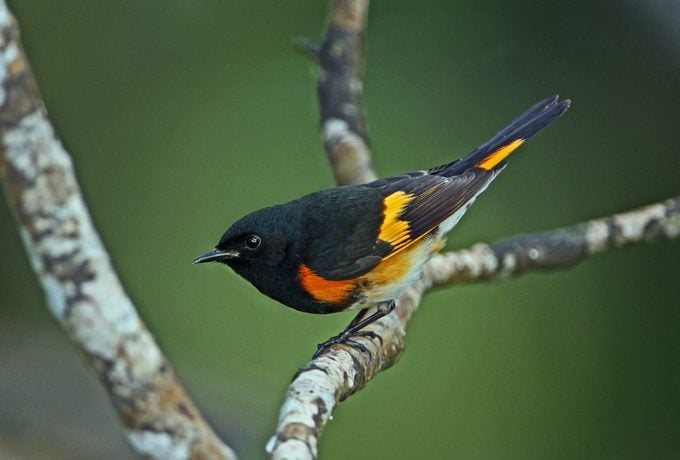
If you’re birding in spring on the edges of eastern forests, be sure to look for redstarts. While they migrate through much of the United States (with the exception of California), they remain for breeding season in the Midwest, Northeast, and a few Southern states such as Alabama and Louisiana.
Redstarts, like many warblers, prefer a forest habitat. In some sections of their range, birders can find them in woods along rivers or even in orchards.
“They’re one of the easiest [warblers] to observe,” says Bill. “Partly because they’re common, but also because many warblers are either high up in the trees most of the time, or they’re hiding in shrubbery. Redstarts like to hang out in somewhat open areas, where they will flit around and hunt for food.”
Learn how to identify yellow-rumped warblers.
American Redstart Diet
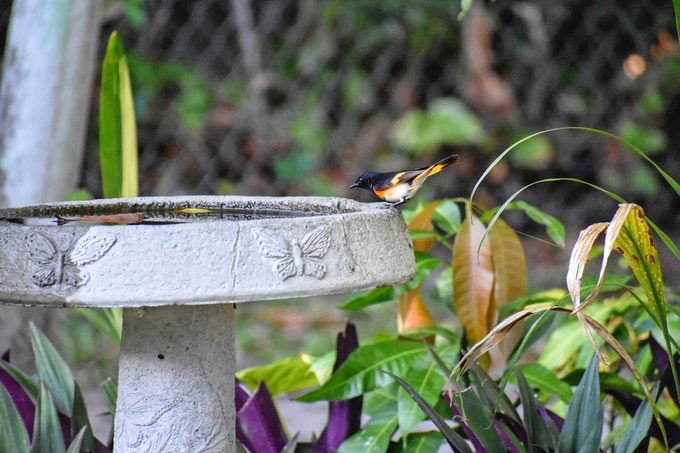
Like most warblers, redstarts usually aren’t interested in bird feeders. Primarily eating bugs, they’re known to dine on flies, moths, beetles, and other insects. They’ll also eat berries from time to time, especially barberry, serviceberry, and magnolia.
Unlike common songbirds, they don’t eat seed—but you might be able to attract warblers into your yard with a bird bath.
Bill says that if you live in the redstart’s migrating range and preferred habitat, all you really need to do is go outside and birdwatch in your yard. “Sooner or later, you’ll see one of the groups of migrants,” he says. “It varies day by day. Watch for movement in the trees.”
Yellow warbler vs goldfinch: learn how to tell the difference.
Nest and Eggs
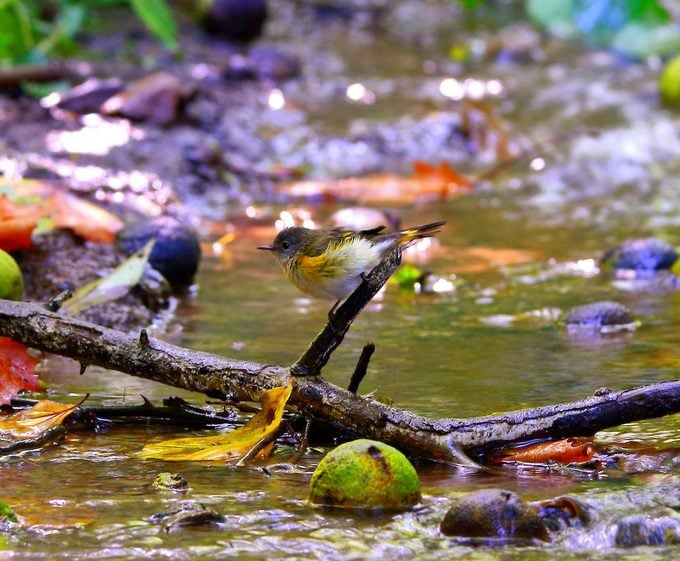
After constructing a nest, a female redstart lays a clutch of one to five eggs. She incubates the eggs for up to two weeks, and young birds remain in the nest for up to two weeks more. The male and female both take part in feeding the fledglings.
“The first-year males look like females,” Kevin says. “When they come back in the spring, they will sing and try to attract a mate, and it looks like a female that’s singing, but it’s actually a male. They get adult plumage the second year.”
Attract a prothonotary warbler with a birdhouse
American Redstart Song
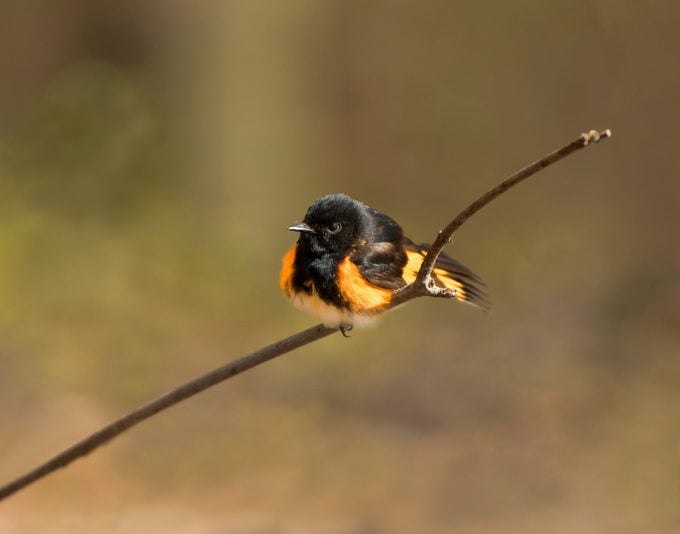
This warbler’s high-pitched, variable song often ends in a sharp shew. Some birders compare the sound to a sneeze.
Bird songs courtesy of the Cornell Lab of Ornithology.
Want to learn more about warblers? Meet the magnolia warbler and black-and-white warbler.
About the Experts
Lifelong birder and ornithologist Dr. Kevin McGowan is a senior course developer for the Cornell Lab of Ornithology’s Bird Academy. He earned a Ph.D in biology at the University of South Florida.
Bill Rowe is the president of St. Louis Audubon Society. Throughout his many years of volunteering and serving on the Board, he has written “Bird of the Week” columns, led field trips and private birding tours, and taught birding classes.
Sources
Why Trust Us
For nearly 30 years, Birds & Blooms, a Trusted Media Brand, has been inspiring readers to have a lifelong love of birding, gardening and nature. We are the #1 bird and garden magazine in North America and a trusted online resource for over 15 million outdoor enthusiasts annually. Our library of thousands of informative articles and how-tos has been written by trusted journalists and fact-checked by bird and garden experts for accuracy. In addition to our staff of experienced gardeners and bird-watchers, we hire individuals who have years of education and hands-on experience with birding, bird feeding, gardening, butterflies, bugs and more. Learn more about Birds & Blooms, our field editor program, and our submission guidelines.
